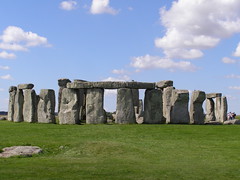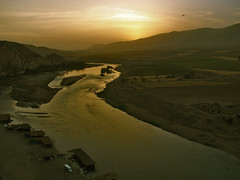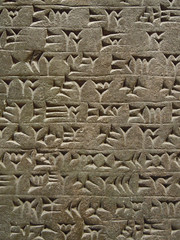| 10660672530 | Stone Age | The historical period characterized by the production of tools from stone and other nonmetallic substances from (2 million until 4000 years ago) |  | 0 |
| 10660679092 | Paleothic Era | The period where human evolution began (lasted until 10,0000 years ago after the ice age). |  | 1 |
| 10660688099 | Foragers | People who support themselves by hunting wild animals and gathering wild edible plants and insects. |  | 2 |
| 10660696460 | Tools in the Paleolithic era | Fossilized bones, and stones were used as butchering tools and one of the first recognizable cultural activities of human beings |  | 3 |
| 10660706379 | Migration | Humans were always migrating because of the need of food and shelter but didn't have homes. |  | 4 |
| 10661520004 | Agricultural revolutions | The change from food gathering to food production that occurred between ca. 8000 and 2000 B.C.E. Also known as the Neolithic Revolution. |  | 5 |
| 10666108991 | Megaliths | huge stones used as monuments |  | 6 |
| 10666112047 | Jericho and Catal Huyuk | two neolithic farming villages |  | 7 |
| 10666114583 | The Towns of Jericho and Catyuk | both towns were centers of trade and hummed craftsmen during the Neolithic period | 8 | |
| 10666119692 | The Towns of Jericho and Catyuk | both towns were centers of trade and hummed craftsmen during the Neolithic period | 9 | |
| 10666125185 | Mesopotamia | Land between two rivers a civilization that rose in the alluvial plane on the Tigris and Euphrates river valley |  | 10 |
| 10666128762 | Cuneiform | A form of writing developed by the Sumerians using a wedge shaped stylus and clay tablets. |  | 11 |
| 10666140208 | 3000 BCE | Mesopotamia did not have adequate rainfall and sometimes floods due to this caused Mesopotamian people to build canals |  | 12 |
| 10666150127 | Ziggurats | temples built by Sumerians to honor the gods and goddesses they worshiped |  | 13 |
| 10666156256 | Sumerians and Semitics | the Mesopotamia people who started the historical period |  | 14 |
| 10666161841 | Sumerians | The people who dominated southern Mesopotamia. They were responsible for the creation of many fundamental elements of Mesopotamian culture-such as irrigation technology, cuneiform, and religious conceptions. |  | 15 |
| 10666171664 | Semetic | A family of related languages spoken across parts Asia and Northern Africa. Most wide spread of this language is Arabic. |  | 16 |
| 10666176009 | 2000 B.C.E | Semitic people became politically in charge |  | 17 |
| 10666183204 | City-state | A city with political and economic control over the surrounding countryside |  | 18 |
| 10666186194 | Mesopotamian Gods | Gods who often represented nature and had human characteristics | 19 | |
| 10666192100 | Mesopotamia social classes | There were the high class gentry, the middle class and the lowest class. The government officials, the king, the priests, landowners and the wealthy traders and merchants formed the upper strata of society. | 20 | |
| 10666206246 | Babylonians | The largest and most important city in Mesopotamia. It achieved particular eminence as the capital of the king Hammurabi.They began a numbering system about 5,000 years ago.The Babylonian number system began with tally marks and base of 60. |  | 21 |
| 10666209077 | Hammurabi | Amorite ruler of Babylon (r. 1792-1750 B.C.E.). He conquered many city-states in southern and northern Mesopotamia and is best known for a code of laws, inscribed on a black stone pillar, illustrating the principles to be used in legal cases. | 22 | |
| 10666212047 | Code of Laws | a collection of written laws and rules, Hammurabi's Code of Laws |  | 23 |
| 10666222032 | Nile River | The world's longest river, which flows northward through East Africa into the Mediterranean Sea |  | 24 |
| 10666225610 | Delta | Egyptians main source of travel and communication |  | 25 |
| 10666234156 | Pharoh | A ruler of ancient Egypt |  | 26 |
| 10666238232 | Ma`at | Concept of divinely created and maintained universe |  | 27 |
| 10666246722 | Prymaid | A large, triangular stone monument, used in Egypt as a burial for a king |  | 28 |
| 10666254685 | Memphis | The capital of Old Kingdom Egypt, near the head of the Nile Delta. Early rulers were interred in the nearby pyramids. |  | 29 |
| 10666256295 | Thebes | Capital city of Egypt and home of the ruling dynasties during the Middle and New Kingdoms. Amon, patron deity of Thebes, became one of the chief gods of Egypt. Monarchs were buried across the river in the Valley of the Kings. |  | 30 |
| 10666258018 | Hieroglyphs | pictures, characters, or symbols standing for words, ideas, or sounds; ancient Egyptians used instead of an alphabet like ours |  | 31 |
| 10666263110 | Papayrus | Paper made from papyrus reed that grew along the Nile. Egyptians wrote on it with ink. It could withstand the hot, dry conditions so many important documents were written on it. |  | 32 |
| 10666266259 | Eqypts hierarchy | The ancient Egyptian social hierarchy placed the Pharaoh at the top and the farmers and slaves at the bottom. The Pharaohs were the community of people who were the richest and the most powerful. | 33 | |
| 10666283162 |  | 34 | ||
| 10666291855 | mummy | body that has been embalmed and wrapped in linen |  | 35 |
| 10666297313 | 2600-1900 B.C.E | Indus Valley Civilization appeared and flourished due to their great ancient cities |  | 36 |
| 10666307664 | Harappa | Site of one of the great cities of the Indus Valley civilization of the third millennium B.C.E. It was located on the northwest frontier of the zone of cultivation, and may have been a center for the acquisition of raw materials. |  | 37 |
| 10666310559 | Mohenjo-Daro | Largest city of the Indus Valley civilization. It was centrally located in the extensive floodplain of the Indus River. Little is known about the political institutions of Indus Valley communities, but the large-scale implies central planning. |  | 38 |
| 10666313861 | Urban Centers | a large and densely populated urban area this caused control over other settlements in the Indus Valley |  | 39 |
| 10666326038 | Hierarchy in the Indus Valley | had occupational groups with the priests in charge | 40 | |
| 10666331718 | 1900 B.C.E | Indus valley suffered system failure and the village-based farming took place but the members who had political power fell |  | 41 |
| 10667366167 | Mesopotamia women | had a lower status than man due to the shift of major food rule in provision from men to women | 42 | |
| 10667377249 | religion of farming communities | tended to focus on an earth mother or mother earth | 43 |
AP World History Flashcards:Chapter 1 Flashcards
Primary tabs
Need Help?
We hope your visit has been a productive one. If you're having any problems, or would like to give some feedback, we'd love to hear from you.
For general help, questions, and suggestions, try our dedicated support forums.
If you need to contact the Course-Notes.Org web experience team, please use our contact form.
Need Notes?
While we strive to provide the most comprehensive notes for as many high school textbooks as possible, there are certainly going to be some that we miss. Drop us a note and let us know which textbooks you need. Be sure to include which edition of the textbook you are using! If we see enough demand, we'll do whatever we can to get those notes up on the site for you!

